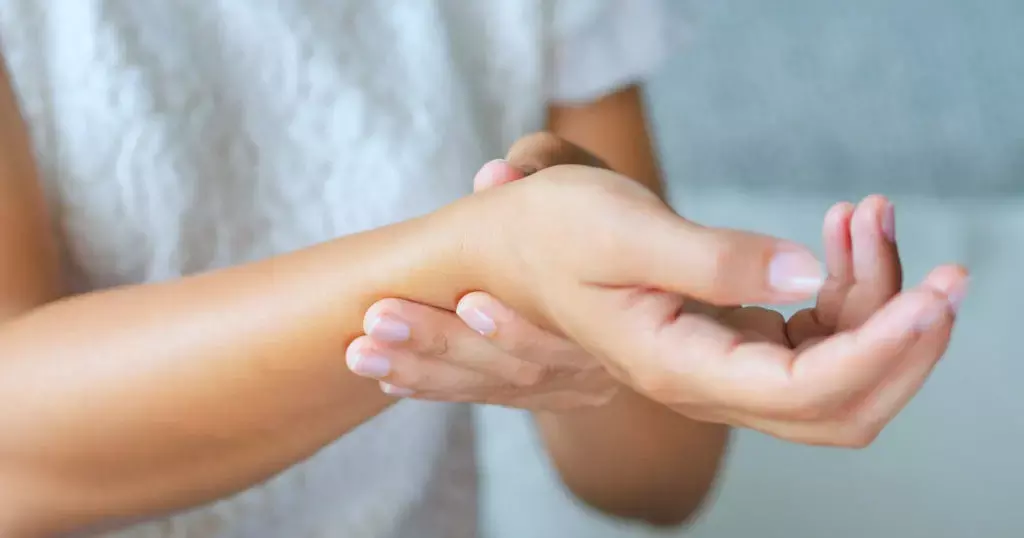- Home
- Medical news & Guidelines
- Anesthesiology
- Cardiology and CTVS
- Critical Care
- Dentistry
- Dermatology
- Diabetes and Endocrinology
- ENT
- Gastroenterology
- Medicine
- Nephrology
- Neurology
- Obstretics-Gynaecology
- Oncology
- Ophthalmology
- Orthopaedics
- Pediatrics-Neonatology
- Psychiatry
- Pulmonology
- Radiology
- Surgery
- Urology
- Laboratory Medicine
- Diet
- Nursing
- Paramedical
- Physiotherapy
- Health news
- Fact Check
- Bone Health Fact Check
- Brain Health Fact Check
- Cancer Related Fact Check
- Child Care Fact Check
- Dental and oral health fact check
- Diabetes and metabolic health fact check
- Diet and Nutrition Fact Check
- Eye and ENT Care Fact Check
- Fitness fact check
- Gut health fact check
- Heart health fact check
- Kidney health fact check
- Medical education fact check
- Men's health fact check
- Respiratory fact check
- Skin and hair care fact check
- Vaccine and Immunization fact check
- Women's health fact check
- AYUSH
- State News
- Andaman and Nicobar Islands
- Andhra Pradesh
- Arunachal Pradesh
- Assam
- Bihar
- Chandigarh
- Chattisgarh
- Dadra and Nagar Haveli
- Daman and Diu
- Delhi
- Goa
- Gujarat
- Haryana
- Himachal Pradesh
- Jammu & Kashmir
- Jharkhand
- Karnataka
- Kerala
- Ladakh
- Lakshadweep
- Madhya Pradesh
- Maharashtra
- Manipur
- Meghalaya
- Mizoram
- Nagaland
- Odisha
- Puducherry
- Punjab
- Rajasthan
- Sikkim
- Tamil Nadu
- Telangana
- Tripura
- Uttar Pradesh
- Uttrakhand
- West Bengal
- Medical Education
- Industry
Plate and screws system viable osteosynthesis method for treatment of unstable and comminuted scaphoid fractures: study

For unstable scaphoid fractures failure rates are as high as 92% especially with an initial displacement exceeding one millimeter, which is why surgical treatment became the gold standard.
The primary method employed worldwide for the treatment of scaphoid fractures is screw fixation. However, in unstable and comminuted fractures, percutaneous fixation could produce complications due to technical challenges, such as improper axis positioning, inaccurate screw length measurement, intra-articular screw penetration, and impingement.
Alternative open approaches for the surgical management of scaphoid fractures have been proposed, and in recent years, a new specific volar locking plate for the treatment of scaphoid fractures has been developed.
L. Marzella et al conducted a study to verify the effectiveness of the volar plate in the treatment of comminuted scaphoid fractures and the necessity for plate removal when consolidation has occurred. It has been published in ‘European Journal of Orthopaedic Surgery & Traumatology.’
The authors present results and consideration about a case series of 44 comminuted scaphoid fractures treated with volar locking and angular stability plate. A retrospective study was conducted involving all patients, consisting of continuous clinical and radiographic assessments, functional evaluations (using QuickDASH and MHQ), and patient satisfaction surveys. The Kolmogorov–Smirnov test was used to determine the normal distribution of data. A paired t test was performed to evaluate the difference between the preoperative and postoperative values. A P-value of
Key findings of the study were:
• All fractures had traumatic causes, with the majority resulting from car accidents.
• All patients achieved clinical and radiographic recovery. However, the plate can impinge with nearby structures and should be removed once the fracture is consolidated.
• After plate removal, further improvement in range of motion was observed.
The authors concluded that - “The plate and screws system is a viable and appropriate method of osteosynthesis in the treatment of unstable and comminuted recent fractures occurring in the middle third of the carpal scaphoid.”
Further reading:
Volar locking and angular stability plate for treatment of comminuted scaphoid fractures: a case series of 44 cases.L. Marzella et al European Journal of Orthopaedic Surgery & Traumatology https://doi.org/10.1007/s00590-024-04095-2
MBBS, Dip. Ortho, DNB ortho, MNAMS
Dr Supreeth D R (MBBS, Dip. Ortho, DNB ortho, MNAMS) is a practicing orthopedician with interest in medical research and publishing articles. He completed MBBS from mysore medical college, dip ortho from Trivandrum medical college and sec. DNB from Manipal Hospital, Bengaluru. He has expirence of 7years in the field of orthopedics. He has presented scientific papers & posters in various state, national and international conferences. His interest in writing articles lead the way to join medical dialogues. He can be contacted at editorial@medicaldialogues.in.


